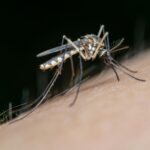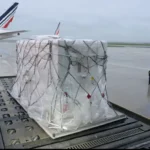UAE Ministry of Climate Change and Environment launches marine plastic waste monitoring programme

Dubai, United Arab Emirates, 19 April 2023 – As part of its efforts to preserve marine resources, seawater quality, and beach cleanliness within the general framework of Year of Sustainability, the UAE Ministry of Climate Change and Environment has launched an integrated programme to monitor plastic waste in the marine and coastal environment of the country. A series of scientific studies will be conducted as part of the programme to enhance efforts to reduce plastic waste.
The studies will use a wide range of methods to measure the quantities and sizes of plastic waste in the country’s seawater and beaches. The study aims to identify the types of plastic pollution in the country’s waters and then implement the necessary precautionary measures to ensure the safety and health of humans and marine life. Additionally, it highlights the importance of adopting responsible consumption within society to minimise plastic waste and avoid disposing of it in seawaters and the environment in general.
His Excellency Dr. Mohamed Alhammadi, Assistant Undersecretary for Biodiversity and Marine Life Sector at the Ministry of Climate Change and Environment, said: “We continue to implement the latest global practices in environmental conservation to contribute to preserving natural resources and reduce the negative impacts of environmental pollutants on human health and living organisms. The plastic waste monitoring programme in the UAE’s marine environment represents one of our most prominent initiatives aimed at monitoring this type of waste and taking a number of measures to limit these pollutants in all the country’s waters and beaches.”
HE Alhammadi added: “The programme contributes to the United Arab Emirate’s achieving the 14th Sustainable Development Goal set by the United Nations, which aims to conserve the oceans, seas, and marine resources and use them sustainably for achieving sustainable development. Through the programme, we also seek to raise community awareness about the impact of plastic waste on the marine environment, which reflects on the life of marine organisms and threatens fishery resources and human health. This drives us to guide partners and all members of society towards responsible consumption of plastic products and their safe disposal rather than in the environment. The upcoming period will witness work on the programme and showcase its results as soon as possible.”
As part of the programme to monitor plastic pollution in the country’s water and beaches, a team from the Marine Environment Research Centre affiliated with the Ministry carried out a study to monitor plastic waste in the marine and coastal environments of the UAE. A scientific methodology was adopted in line with the best practices followed globally in the field of measuring marine waste for entities such as the United Nations Environment Program, the International Maritime Organization, the Food and Agriculture Organization, UNESCO, the International Atomic Energy Agency, the World Meteorological Organization, the United Nations Industrial Development Organization, and the Intergovernmental Oceanographic Commission.
Accordingly, samples were collected from nine beaches along the country’s coastal area to measure the amount of plastic waste. These samples included beach waste, macroplastics, and microplastics. The collection method involved selecting two random areas of 100 meters, with 10 meters between each location. One square meter was taken in each of the two random areas to measure the amount of beach waste and macroplastics, and three squares of 0.5 square meters were chosen for measuring microplastics.
The seawater samples were collected from 14 stations along the country’s coastlines to measure the quantity of microplastics based on the topography and terrain of coastal areas and the dynamics of marine currents.
The collected beach waste was classified according to its type and weight following the United Nations Environment Program and the Intergovernmental Oceanographic Commission (UNEP-GESAMP) classification system. The necessary tests were conducted at the Marine Environment Research Centre laboratories.
Plastic waste is currently one of the largest primary sources of pollution in rivers and oceans, calling for concerted efforts to ensure the sustainable use of marine environment wealth. Plastic materials are present in different sizes and shapes and are classified into microplastics – plastic pieces smaller than 5 millimeters, and macroplastics, which are larger than 5 millimeters.
Plastic waste is regarded as one of the most challenging environmental problems as it impacts water quality and soil and threatens the survival of terrestrial and marine organisms and human life. Many countries worldwide are working to reduce plastic production to alleviate pressure on the ecosystem.
Last Updated on 10 months by News Desk 2












